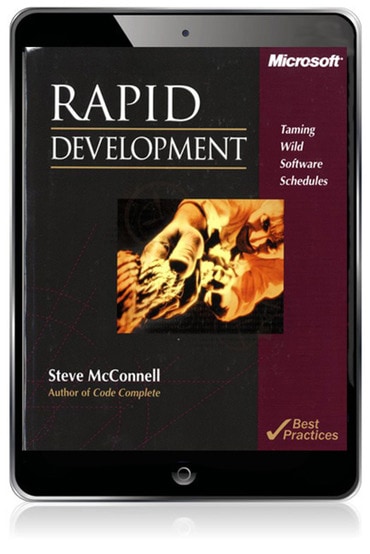
Rapid Development, 1st edition
Published by Pearson (July 2, 1996) © 1997
- Steve McConnell
Title overview
Corporate and commercial software-development teams all want solutions for one important problem—how to get their high-pressure development schedules under control. In RAPID DEVELOPMENT, author Steve McConnell addresses that concern head-on with overall strategies, specific best practices, and valuable tips that help shrink and control development schedules and keep projects moving. Inside, you’ll find:
- A rapid-development strategy that can be applied to any project and the best practices to make that strategy work
- Candid discussions of great and not-so-great rapid-development practices—estimation, prototyping, forced overtime, motivation, teamwork, rapid-development languages, risk management, and many others
- A list of classic mistakes to avoid for rapid-development projects, including creeping requirements, shortchanged quality, and silver-bullet syndrome
- Case studies that vividly illustrate what can go wrong, what can go right, and how to tell which direction your project is going
- RAPID DEVELOPMENT is the real-world guide to more efficient applications development.
The full text downloaded to your computer
With eBooks you can:
- search for key concepts, words and phrases
- make highlights and notes as you study
- share your notes with friends
eBooks are downloaded to your computer and accessible either offline through the Bookshelf (available as a free download), available online and also via the iPad and Android apps.
Upon purchase, you'll gain instant access to this eBook.
Time limit
The eBooks products do not have an expiry date. You will continue to access your digital ebook products whilst you have your Bookshelf installed.